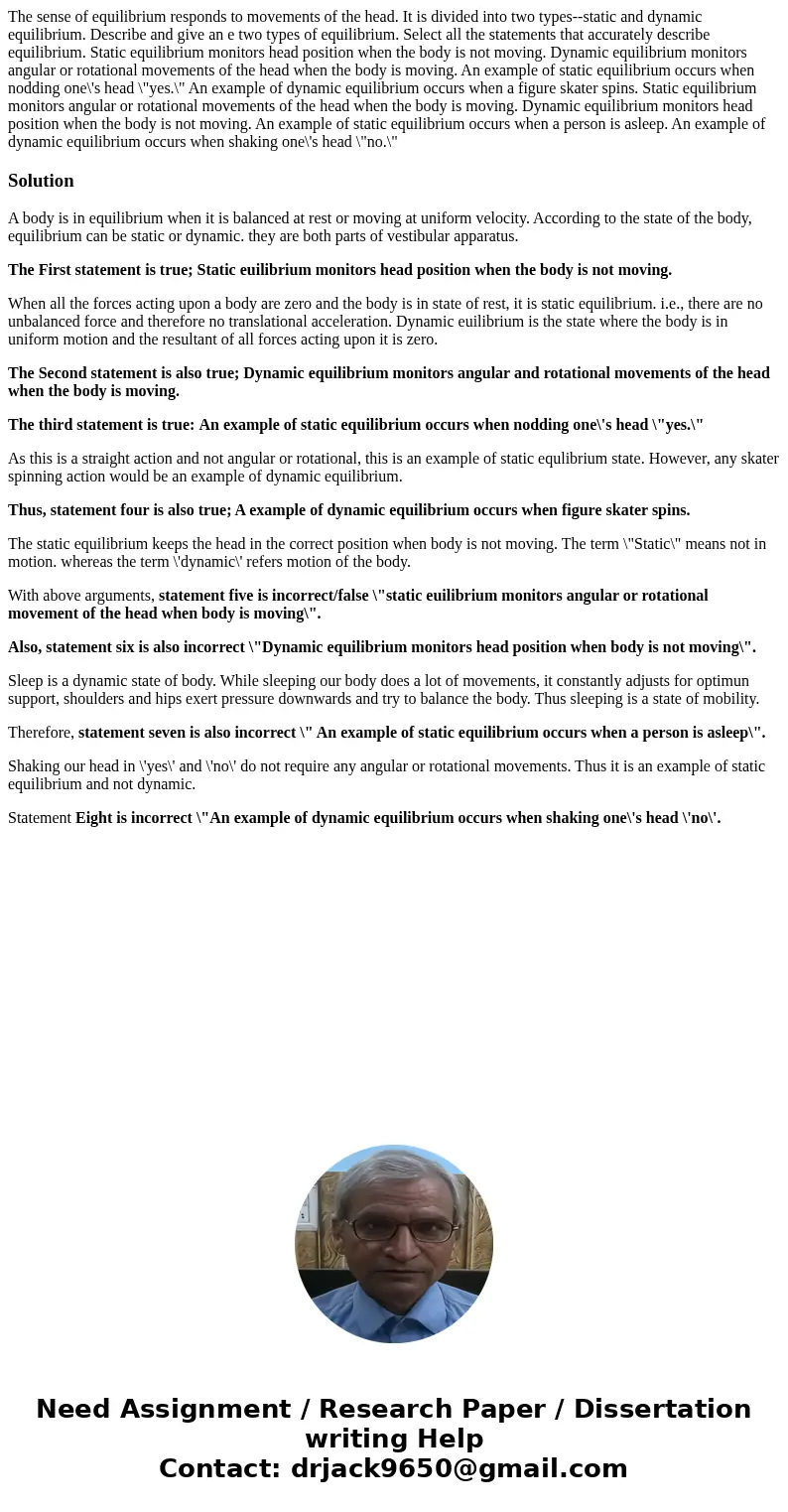The sense of equilibrium responds to movements of the head I
Solution
A body is in equilibrium when it is balanced at rest or moving at uniform velocity. According to the state of the body, equilibrium can be static or dynamic. they are both parts of vestibular apparatus.
The First statement is true; Static euilibrium monitors head position when the body is not moving.
When all the forces acting upon a body are zero and the body is in state of rest, it is static equilibrium. i.e., there are no unbalanced force and therefore no translational acceleration. Dynamic euilibrium is the state where the body is in uniform motion and the resultant of all forces acting upon it is zero.
The Second statement is also true; Dynamic equilibrium monitors angular and rotational movements of the head when the body is moving.
The third statement is true: An example of static equilibrium occurs when nodding one\'s head \"yes.\"
As this is a straight action and not angular or rotational, this is an example of static equlibrium state. However, any skater spinning action would be an example of dynamic equilibrium.
Thus, statement four is also true; A example of dynamic equilibrium occurs when figure skater spins.
The static equilibrium keeps the head in the correct position when body is not moving. The term \"Static\" means not in motion. whereas the term \'dynamic\' refers motion of the body.
With above arguments, statement five is incorrect/false \"static euilibrium monitors angular or rotational movement of the head when body is moving\".
Also, statement six is also incorrect \"Dynamic equilibrium monitors head position when body is not moving\".
Sleep is a dynamic state of body. While sleeping our body does a lot of movements, it constantly adjusts for optimun support, shoulders and hips exert pressure downwards and try to balance the body. Thus sleeping is a state of mobility.
Therefore, statement seven is also incorrect \" An example of static equilibrium occurs when a person is asleep\".
Shaking our head in \'yes\' and \'no\' do not require any angular or rotational movements. Thus it is an example of static equilibrium and not dynamic.
Statement Eight is incorrect \"An example of dynamic equilibrium occurs when shaking one\'s head \'no\'.

 Homework Sourse
Homework Sourse